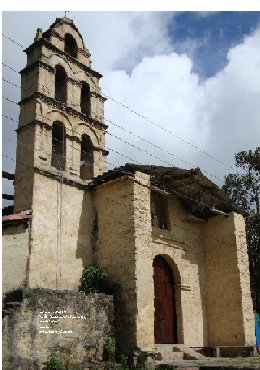Resumen
Este trabajo muestra los resultados obtenidos en la variación de las propiedades mecánicas de unidades de adobe sometidas a factores ambientales simulados de radiación y condensación. Para ello se estudiaron adobes de más de trecientos años de antigüedad, extraídos de la Capilla Doctrina de Tausa, y adobes nuevos construidos en laboratorio. Las piezas de adobe fueron sometidos a ciclos alternados de 6 horas de radiación UVA y 2 horas de condensación durante 360, 720, 1440, 2160 y 2880 horas de exposición, tiempos en los cuales se analizó la variación en las propiedades mecánicas del adobe mediante ensayos de esfuerzo deformación. Se logró concluir que la exposición a radiación UVA acelera la variación en las propiedades mecánicas de los adobes nuevos, mientras que al adobe de la capilla de Tausa no le causa ningún efecto mecánico. Igualmente, se pudo establecer que los cambios en la resistencia del adobe están dados por la variabilidad en la cohesión, ya que el ángulo de fricción de este material no se modifica con el tiempo.
La revista Apuntes se encuentra registrada bajo la licencia Creative Commons Reconocimiento 4.0 Internacional. Por lo tanto, esta obra se puede reproducir, distribuir y comunicar públicamente en formato digital, siempre que se reconozca el nombre de los autores y a la Pontificia Universidad Javeriana. Se permite citar, adaptar, transformar, autoarchivar, republicar y crear a partir del material, para cualquier finalidad (incluso comercial), siempre que se reconozca adecuadamente la autoría, se proporcione un enlace a la obra original y se indique si se han realizado cambios. La Pontificia Universidad Javeriana no retiene los derechos sobre las obras publicadas y los contenidos son responsabilidad exclusiva de los autores, quienes conservan sus derechos morales, intelectuales, de privacidad y publicidad.
El aval sobre la intervención de la obra (revisión, corrección de estilo, traducción, diagramación) y su posterior divulgación se otorga mediante una licencia de uso y no a través de una cesión de derechos, lo que representa que la revista y la Pontificia Universidad Javeriana se eximen de cualquier responsabilidad que se pueda derivar de una mala práctica ética por parte de los autores. En consecuencia de la protección brindada por la licencia de uso, la revista no se encuentra en la obligación de publicar retractaciones o modificar la información ya publicada, a no ser que la errata surja del proceso de gestión editorial. La publicación de contenidos en esta revista no representa regalías para los contribuyentes.


